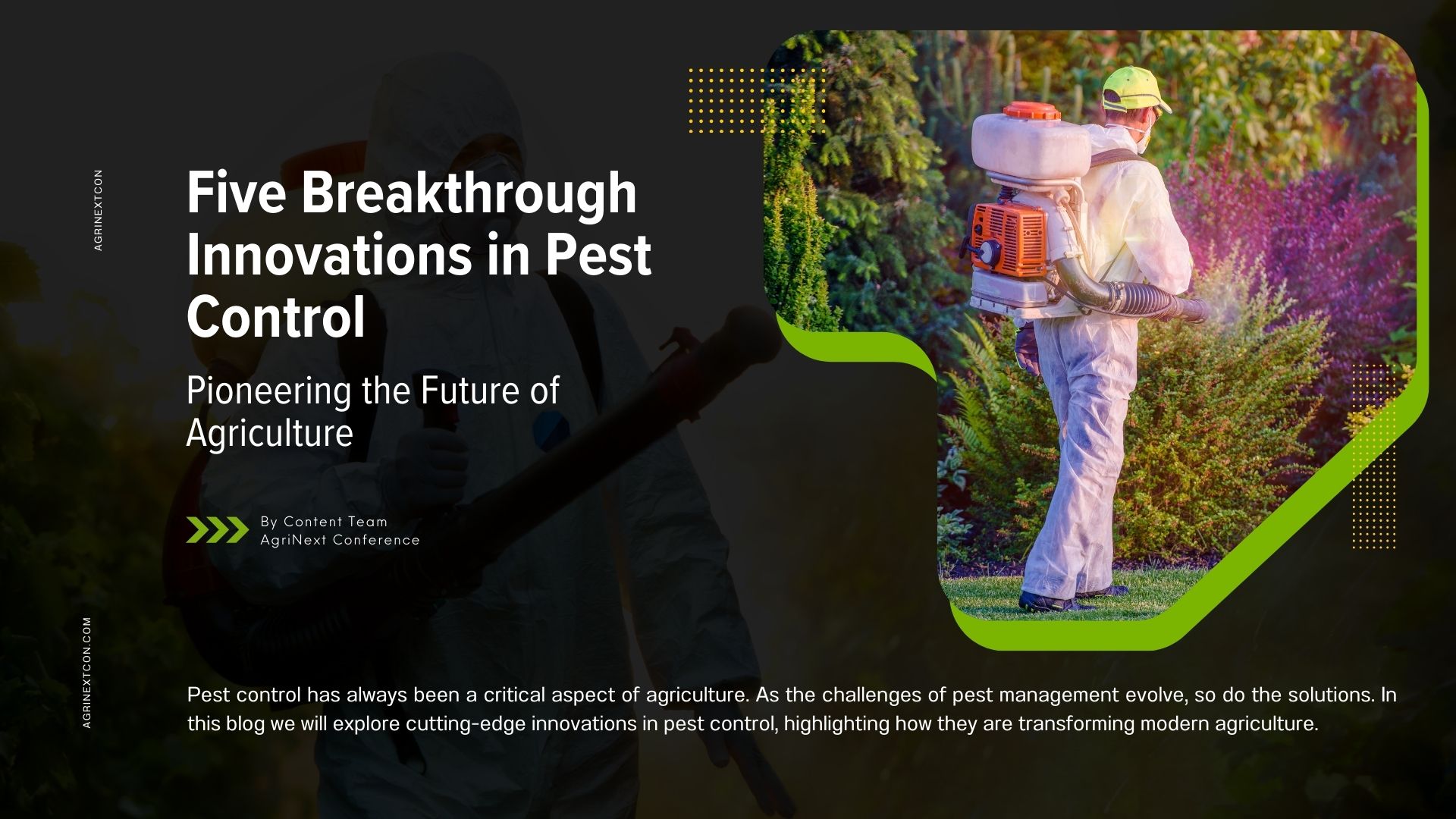
Introduction
Pest control has always been a critical aspect of agriculture. As the challenges of pest management evolve, so do the solutions. In this blog we will explore cutting-edge innovations in pest control, highlighting how they are transforming modern agriculture.
1. Biological Pest Control
Biological pest control uses natural predators or parasites to manage pest populations. Instead of relying on chemical pesticides, farmers can introduce organisms that naturally target specific pests.
Example: In California, citrus farmers use the parasitic wasp Aphytis melinus to control scale insects, a major pest for citrus crops. This approach has significantly reduced the need for chemical interventions.
Another example includes the use of ladybugs (lady beetles) to control aphids. Releasing ladybugs into fields can naturally reduce aphid populations without the need for chemical pesticides.
2. Genetic Pest Control
Genetic pest control involves modifying the genes of pests or their natural predators to reduce pest populations. This method includes releasing genetically engineered insects that can either die out after a few generations or spread traits that limit reproduction.
Example: The Oxitec mosquito, genetically engineered to suppress populations of the Aedes aegypti mosquito, has been deployed in regions like Brazil to combat the spread of diseases like Zika and dengue, indirectly benefiting agriculture by reducing mosquito-borne diseases that can affect farm workers.
3. Pheromone Traps
Pheromone traps use synthetic versions of natural insect pheromones to lure pests into traps, where they can be monitored or controlled. These traps are particularly effective in monitoring and managing pest populations before they reach damaging levels.
Example Codling moth pheromone traps are widely used in apple orchards to monitor and control populations of this pest, which can cause significant damage to apple crops.
4. Automated Pest Detection Systems
With advancements in AI and machine learning, automated pest detection systems are becoming more common. These systems use cameras and sensors to identify and quantify pest populations in real time, allowing farmers to make informed decisions about pest control measures.
Example: FarmSense’s FlightSensor™ uses AI to identify and monitor insect populations in real time, helping farmers in the U.S. reduce their reliance on broad-spectrum pesticides by targeting specific pests at the right time.
5. Drone-Assisted Pest Control
Drones are increasingly being used to apply pesticides with precision, ensuring that only affected areas are treated, which reduces the amount of chemicals used and minimizes environmental impact. Drones can also be used for monitoring pest populations from above, offering a broader view of infestations.
Example: In India, drones are used to spray neem-based biopesticides on rice fields, targeting pest hotspots efficiently while reducing human exposure to chemicals.
Additional Effective Methods in Pest Control: Enhancing Integrated Strategies
Integrated Pest Management (IPM)
Integrated Pest Management (IPM) combines biological, cultural, and chemical methods for comprehensive pest control.
Example: In an apple orchard, an IPM approach might include introducing predatory mites to control spider mites (biological control), monitoring pest populations regularly, using pheromone traps (mechanical control), and applying targeted pesticide sprays only when necessary (chemical control). This holistic approach minimizes the use of chemicals while effectively managing pests.
Cultural Control
Crop Rotation to Manage Soil-Borne Pests
Crop rotation is a cultural control method that involves planting different types of crops in the same area in sequential seasons to manage soil-borne pests.
Example: rotating corn with soybeans can disrupt the life cycle of corn rootworms, reducing their numbers in the field.
Conclusion
These innovations are just the beginning of what’s possible in pest control. By adopting these technologies, farmers can protect their crops more effectively, reduce environmental impact, and ensure a more sustainable future for agriculture.
Innovations on Display at AgriNext 2024
The advancements in pest control are not just theoretical—they are actively shaping the future of agriculture. At AgriNext 2024, these innovations will be front and center, showcasing how technology, biology, and precision farming are transforming the way we manage pests.
Attendees will have the chance to explore these cutting-edge solutions, learn from industry experts, and see firsthand how these technologies are being applied in real-world scenarios. AgriNext is the perfect platform to discover how these innovations can be integrated into your farming practices, ensuring a more sustainable and productive future
Signup For AgriNext Conference Newsletter


